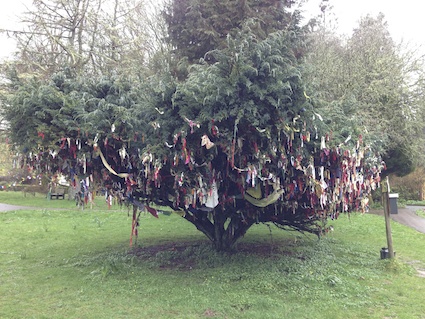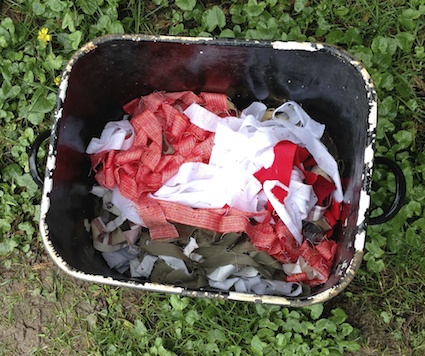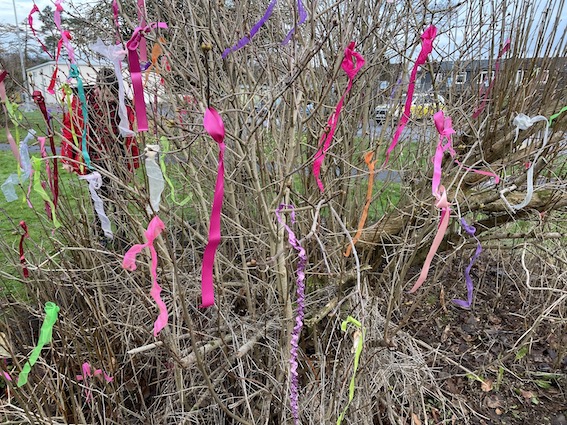A long time ago I visited the Kagyu Samye Ling Buddhist Monastery and World Centre for Peace and Health. Whilst walking around the Peace Garden, I came across the Clootie Tree. It was impossible to ignore such was the blaze of colour and vibrancy even on that dull, overcast day.

This is a unique Clootie Tree. It is a combined Scottish and Tibetan custom. In Scotland, Clootie Trees were traditionally created beside spring wells. Often they were hawthorn trees. “Clootie” means a strip of cloth or rag. They are tied to the branches of trees near a well. The custom is believed to be Celtic in origin. A local nature spirit is believed to inhabit certain wells or springs with special healing powers. The rags are tied to the trees for a number of reasons.

Firstly some are added simply to honour the spirit of the well. However, the main custom is to dip your piece of cloth into the water in the well before tying it to the tree. Some people believe you need to wash the affected part of your body with the wet rag first. If this happens your illness or ailment will fade away as the cloth disintegrates.

The Clootie Tree at the Samye Ling Centre has a more positive tradition. You are free to make a financial donation into the box beside the tree. The monies raised goes to support ROKPA‘s humanitarian projects across Tibetan areas of China, Nepal and Zimbabwe. You help yourself to one of the strips of cloth in the box and attach it to the juniper tree. As you do this, you are free to make a wish or prayer – usually for others rather than thinking of yourself.

As the wind blows the cloth strips, your good wishes are realised and carried into the world until their disintegration marks the fulfilment of the wish. So the distinct difference is that this tradition is about decorating with love, prayers and good wishes rather than a need for personal healing.

The Clootie Tree has a wonderful presence in the Peace Garden. It complements the calm scenery, ponds and statues within the gardens. It is another example of the positive mindset and beliefs of Buddhism which we can all share and celebrate too. Perhaps a similar custom may work in a school garden too.
In 2022, I was working with a P6 class here in Inverurie on a gardening project outside the Donbank Ward in Inverurie. At Christmas we decorated the garden with baubles and tree decorations. One lilac bush we kept solely for ribbons to honour the Clootie Tradition. Each child tied a ribbon to the tree and made a wish as they did so.

To find out more about the work of ROKPA have a look at the website or blog. This blog post was originally published in April 2014.




















Thanks Juliet. What a wonderful idea. Binds two different cultures together without taking away from either. Involves generosity, compassion, interdependence and impermanence.
I came across my first Clootie Tree at Firle Church yesterday. Beautifully hung with ribbons the colours of a rainbow it promotes peace and reconciliation.
Thanks for letting me know, Janette. It’s good to see this positive idea is spreading.